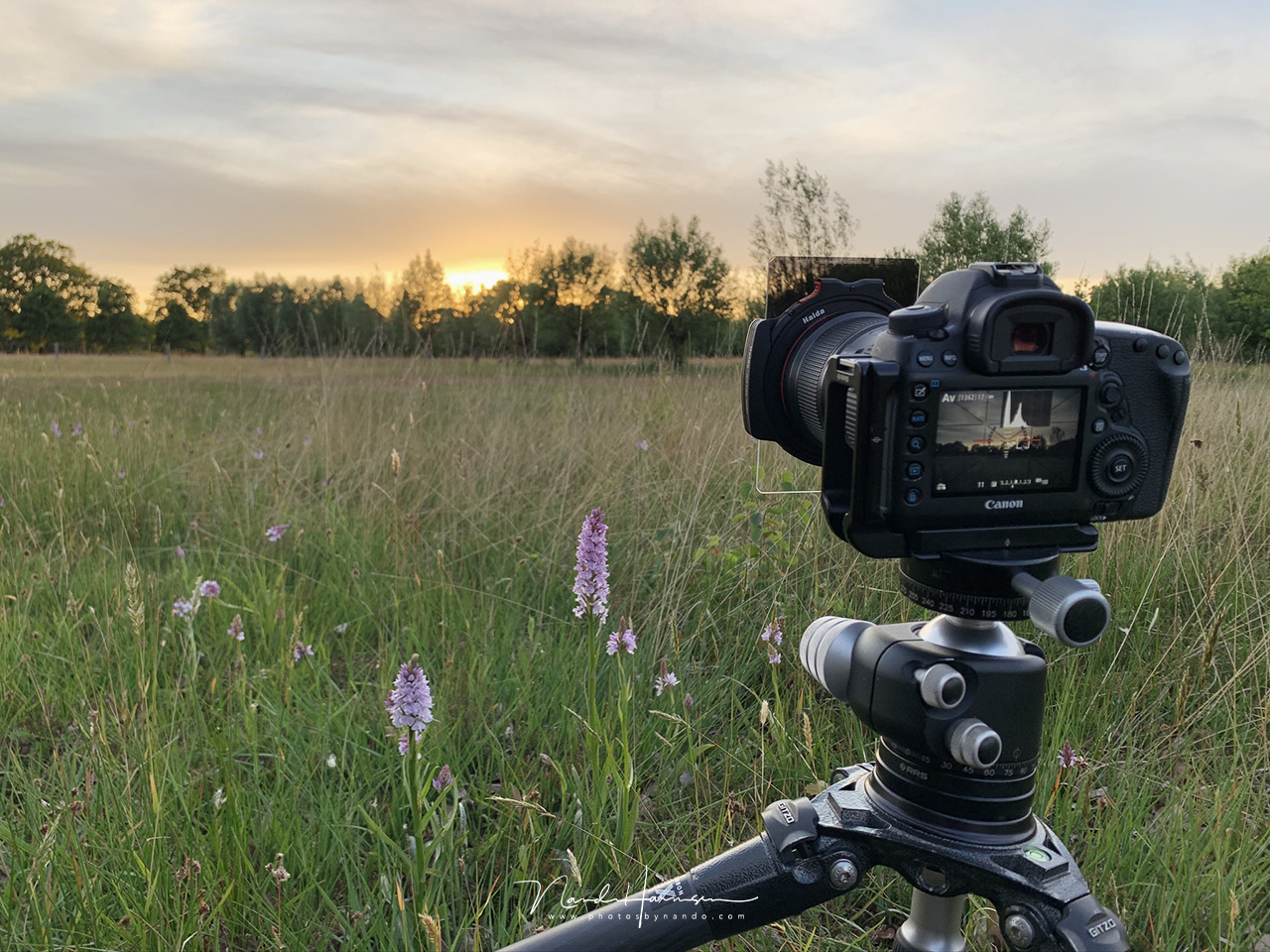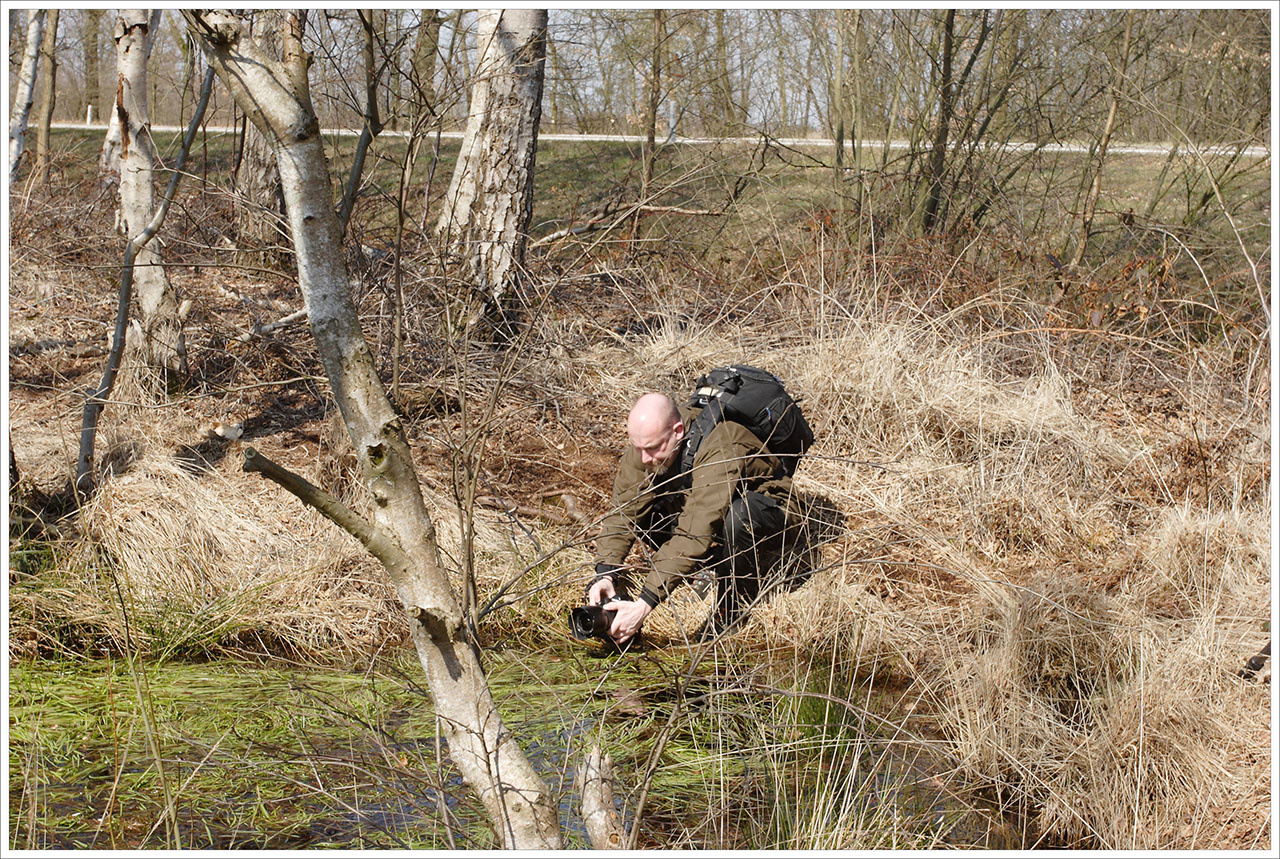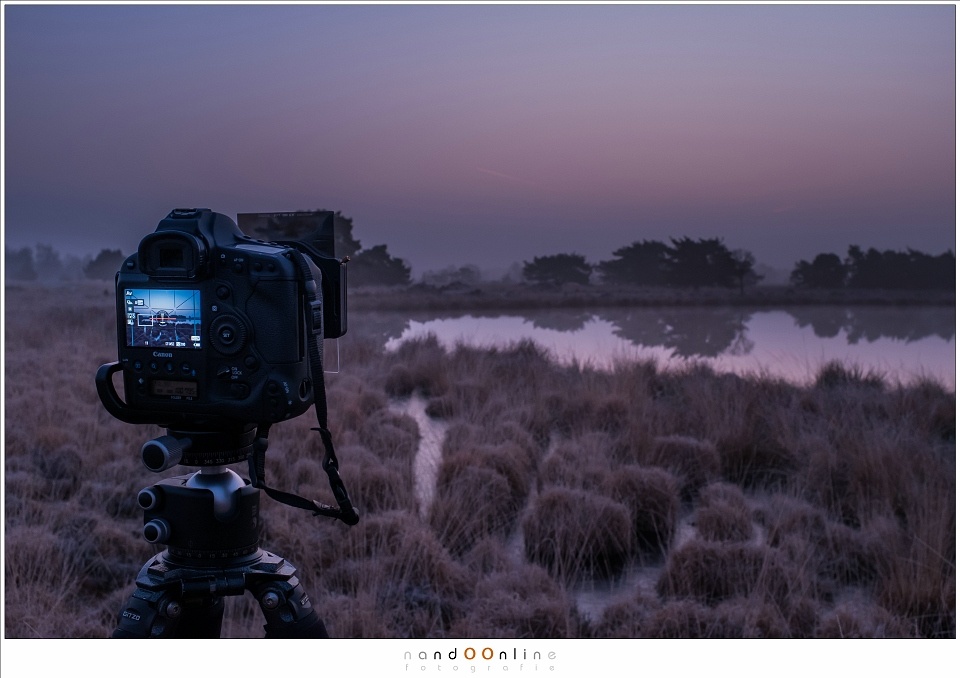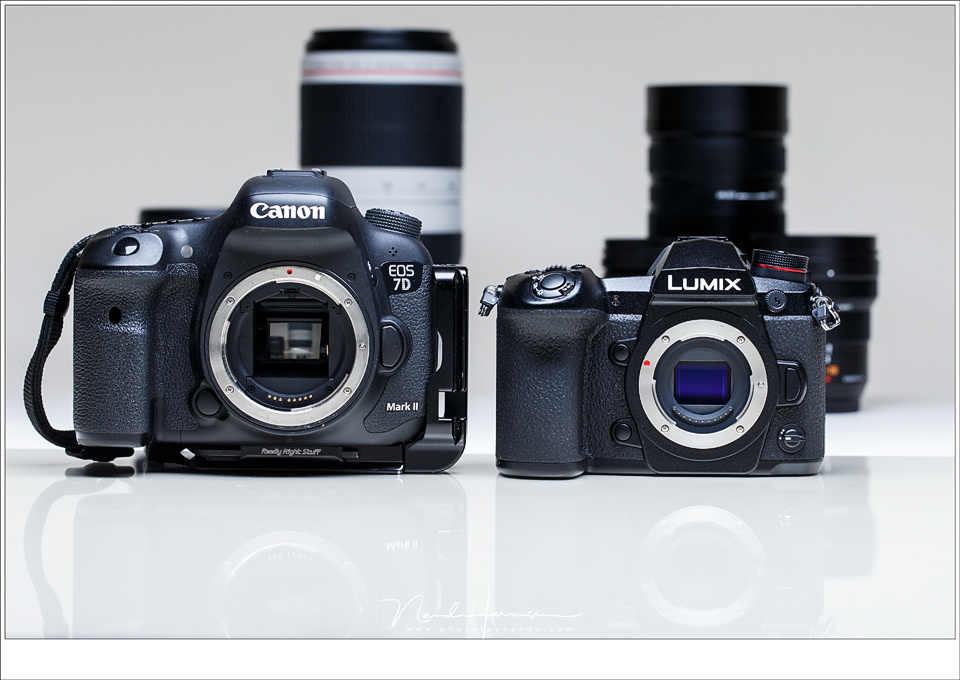Have you seen people with those small digital cameras or smartphones, holding them at arm’s length, and viewing the LCD screen while taking a picture? As a serious amateur photographer, you don’t want to takes pictures this way. I have six good reasons for using live view screen when photographing from a tripod.
Do you remember the first compact cameras without a proper viewfinder? You had to use the LCD screen on the back to see what you were photographing. It became normal to hold the camera at arm’s length while photographing. Similar cameras are still on the market, although these little devices are being replaced by smartphones at a fast rate.
It is easy to associate the use of live view with the LCD screen of a compact camera or smartphones. Imagine using a DSLR like that. It would be difficult to keep the camera still, and bright sunlight could obscure the image on the screen. On top of that, the viewfinder makes it much easier to aim your camera and keep moving subjects inside the frame. Try to do this while holding your camera like a smartphone.

This is the best way of holding the camera: in front of your eye. But not always.
At first, I was skeptical about the live view function. Why use an LCD screen when the optical viewfinder has a beautiful magnification with all the basic information available. Live view might also drain the battery very quickly. But as time passed, I discovered the benefit of live view when using the camera on a tripod. Live view also became more evolved, making it more useable. Still, a lot of photographers I meet at my workshops and masterclasses never use live view.
Since I have been using live view when working from a tripod, I discovered six good reasons for the use of live view. It not only makes photographing much easier, but it can also bring a lot of fun too. These reasons may be very personal, but I see many become enthusiastic about it when I demonstrate the way I use live view for my photography.
1. Stay Connected With Your Subject

By using live view, you can stay in contact with your surroundings
When you are peering through the viewfinder, you are seeing the world inside a small box. You will miss a lot of the things that surround you. When using live view, this changes completely. You will be more aware of the surroundings, seeing things and perhaps even experience a whole other way of photographing. I always feel much more connected with the subject in a way.
This not only applies to landscape photography, but it can also apply for model photography. If you don’t peer through the viewfinder, it's easier to stay connected with your model.
2. Very Accurate Manual Focus

Focusing with live view is very accurate — perfect for macro photography
Manual focus can be very precise when using live view. Autofocus is wonderful, quick, and often very accurate. But there are situations where the manual focus will work better. In live view, you are able to enlarge the image, often up to a magnification of 10x or more, making manual focus very accurate. This works very well with macro photography or focusing on infinity when photographing stars. It can also work with landscapes, especially when shooting through a foreground.
If you are a mirrorless camera user, you also have the ability to use focus peaking. It makes precise focusing even easier.
3. Preview the Exposure and the Histogram

Just look at the screen and you know if the exposure is good. Watch the histogram, and you can make the exposure perfect.
It is possible to preview the exposure settings when using live view. Remember, you first have to activate the exposure simulation in the menu. When you do, it becomes easy to adjust the exposure settings to your needs. Even picture profiles will be visible, like monochrome settings or other special film simulations.
I’m aware all this is common in mirrorless cameras. For many photographers, it is one of the biggest benefits of these types of cameras. Fortunately, this function is also possible with DSLR cameras by activating live view. Just think of it as the mirrorless function of a DSLR camera.
4. Easy to Shoot From Strange Angles

Photographing from strange angles can be much easier with live view
Before live view existed, it could be a challenge to shoot from strange angles. Holding the camera a few centimeters above the ground or high above your head made it impossible to look through the viewfinder. On those occasions, you had to use an angle finder. With live view, this has become much easier, especially with tilted screens. There is no need for an angle finder anymore.
5. Making Composition Much Easier

I find it much easier making good compositions with live view.
I found live view a great help in finding good compositions. Many photographers have a problem translating the 3D world into a 2D image. Looking through a viewfinder still gives a sense of depth, although that is tougher because you use only one eye. But live view shows the image in 2D, just as you would on the monitor screen or a print. And it shows the image before you take the picture, making it easier to play around with the composition.
6. Automatic Mirror Lockup

With live view, you automatically use mirror lock-up — perfect for longer exposures
If you are using shutter speed between 1/4 and 2 seconds, the movement of the mirror may become visible as motion blur. Also, macro photography, where large magnifications are used, can be very sensitive to any camera shake. You can activate the mirror lockup function, but it is much easier to activate live view instead. As previously mentioned, it is like the mirrorless function of the DSLR, getting rid of the mirror. When using live view, you never have to activate the mirror lockup anymore.
Mirrorless Camera and the DSLR

Using live view can be done with both mirrorless and DSLR
In my opinion, there is no real difference between a mirrorless camera and a DSLR with live view. You are using the LCD screen with both cameras, complete with the exposure preview and picture profiles. Both are used in the same way, and that is why I think live view can be considered the mirrorless function of the DSLR. The big difference is, with a DSLR, I can turn off the mirrorless function and start using the optical viewfinder if needed, which I find a big benefit. But that is a very personal opinion. Not all may agree with this.
How about you? Do you use the live view function of your DSLR or the LCD screen of your mirrorless camera for your type of photography? Or perhaps you only use the viewfinder. Please leave a comment and tell me what you prefer and why. I am looking forward to your comments.







I mostly do wildlife including wildlife macros. So, no live view or tripod for me. One of the advantages of LV or mirrorless is the accuracy of the AF. For a regular DSLR using the VF, you might need to fine-tune the AF for your lenses.
For that sort of imaging I would also use the view finder.
When I use live view, as infrequently as possible and always under duress ;-), I also use my Hoodman Loupe to avoid glare and aide my poor vision. For critical focus, nothing else comes close but I almost always check the composition again, with the OVF (no ML for me, thank you), before pressing the button on my wired remote (also not a fan of wireless remotes).
The hoodman... yes, I never thought of that. It would definately help seeing the screen. :)
I'm hours away from receiving my first Canon D5 MarkIV. I've moved up from less than full frame Canon cameras and have some decent Canon glass. Is the turning off of the "mirrorless function and start using the optical viewfinder if needed" even an option for me ? Thanks in advance and please pardon my ignorance. I'm late to the party in terms of talking on photography for fun...Never mind... Google knew.
Me too ... I started shooting seriously in the 2000s ... I’m so embarrassed to admit I wasn’t around in 1826! Late to the party! Shame on me
That's okay; we always knew you'd show up eventually. :-)
I which my parents had met during the French Revolution. I’d be celebrated as the inventor of image making for sure!
It is a great camera. I know you gonna love it. :)
When using a tripod I like to use Touch Shutter in Live View on my Canon cameras with a touch screen. You have the option where you can just touch the screen to take the photo. Sounds simple and straight forward enough but there's more! Touch shutter works when using manual focus too. Works really well with DPAF but will work with the old Hybid DPAF like the original EOS M or a Rebel SL1. You can also us it with the 2 or 10 second shutter timer. So if you're using a tripod and a long telephoto and need to minimize shake us the timer. Flippy screen can make it even easier than tilt only in some cases. It only takes a very light touch. Do keep in mind that dry fingers can make a slight decrease in touch screen sensitivity.
I'm assuming this will will work with other brands if their cameras have a similar option.
Touch shutter... Often I make the mistake by touching the screen to place the rectangle, and then it makes the image too soon.
Yeah, I've done that too. Have to remember to turn it off until ya need it. Easy to forget and I still do sometimes. ;-)
How accurate is that? Wouldn't you need to be focusing on a fairly large area?
Short answer is that it depends on the camera you are using.
I know that my EOS R will let you select an AF point size (3 size options) or a zone or zones. Same for my other touch screen Canon cameras to varying degrees. They are older than the R and it's been refined since introduction around 2012. Plus the R has more options being a newer more upscale model than my other cameras.
Very accurate with dual pixel AF cameras. Pretty much as good with the cameras with the earlier "hybrid DPAF". Do bear in mind that DPAF works best with at a least a visible vertical line or none horizontal line in the box or zone. I speak from experience here.
If really need maximum sharpness and / or want to be sure the desired area is in focus you can turn off AF and zoom to 100% and manually focus. Touch shutter still works in manual AF.
I use the live view function heavily when doing architecture and real estate photography. I also use the manufacturer's app on either tablet or phone. This function comes in very handy for night sky photography, as well, since my camera has a night mode in which the monitor and live view screen go all-red to preserve night vision. In this scenario, I do not use the phone or tablet since the app will not echo the all-red night mode.
I used the night mode on different cameras, but I never liked it.
The app is really nice, especially when shooting real estate on a heigth stand :)
I’m so unsure of myself and I wanna look like a pro! Oh no!!! I looked at the backscreen! Did someone notice?! Omg omg omg I’m dying right now....
Do people really need six reasons of why to look at a backscreen?
I never see you writing anything of worth on this site either tbh.
I’m not pretending I am. I’m just voting on what articles I think are useful versus those that I find silly. Go ahead and like his article on why you should look at the backscreen. And have a few more ideas for great articles ... such as why the shutter button still is needed and why two card slots are essential.
What’s your point?
Has it ever occurred to you that people of differing abilities read this site, and many may have been misinformed that they should only use the viewfinder to shoot, because that’s what proper photographers do. You would be surprised how many times this waffle comes out of people’s mouths.
Time to start looking past the end of your own nose and realise that not all articles are aimed at all people.
Has it occurred to you that those “professionals” aren’t professional if they told others you cannot use the backscreen?
Who says such a thing?
No honestly, where did you read that you CANNOT use the backscreen?
Sounds like an urban myth that people insist on using the viewfinder all the time...
I dont use Facebook anymore but when i did there was quite regularly people on there with such views in the various photography groups. You would be surprised how many people are stuck in their ways, its no different to people who claim that only real DJs use vinyl records etc.
We both know that using the LCD is a huge advantage in a lot of scenarios but again, its not us that need convincing.
Edit: this very comment section may contain examples.
I’m not on Facebook... is anyone still using it? I guess that may explain it.
I left it for the exact reasons stated above, not just photography but every single subject matter, everyone is an expert with poor opinions about their chosen subject matter.
There are definitely popular FB groups that exist that attract the type of people who hold such viewpoints though, the same people that call checking your images after a shot 'chimping' and treat it like some cardinal sin that someone might want to check they have the right shot before getting home.
I use it a lot on landscape and specially at night.
It's the only mode for me with landscape work; Live View; manual focus; silent shutter: 3 x 1ev bracketing; wireless remote.
Easy to Shoot From Strange Angles
Yes indeed. Great for shooting from over your head within a crowd and the subjects are less sensitive to the camera.
Uh, wait a second ... we are talking about tripods.
hahaha - I do mention tripod photography, but is it is definately usefull for handheld over you head, or low at the ground too.
;)
After 20-30 years of shooting Hasselblad and RZ67 I am used to looking down at a waist level viewfinder so I like to flip out the screen when the camera is on a tripod, very normal for me. And as a bonus the image is not reversed!
That works great if your tripod is at the right height.
Wouldn't that be great, if a camera manufacturer would introduce a camera with the LCD screen on top of the camera, just like the Hasselblad and RZ67 from the old days :)
Mike Ditz, absolutely. I loved viewing the image on a groundglass (instead of "peerin' through a tiny 'ole"). Going back to something like a ground glass--but much, much better--was the joy of using Live View from the moment it came out.
And a flip-out screen works perfectly when the camera is waist level and vertical.